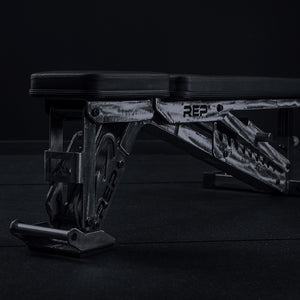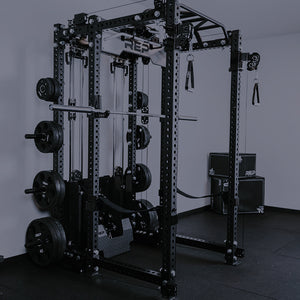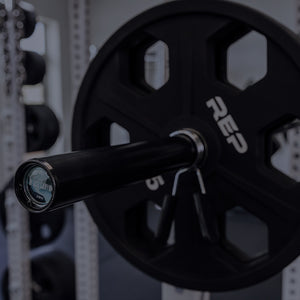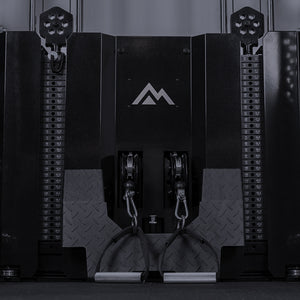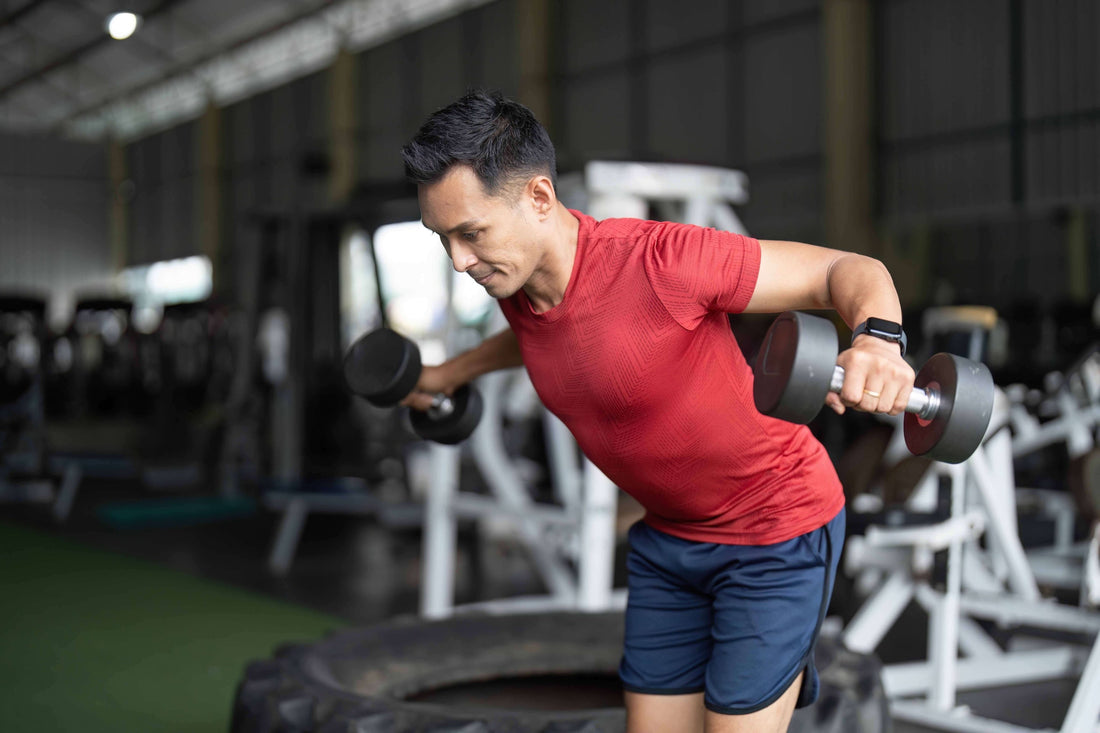
Keep your chest day exciting.
You’d be hard-pressed to find a worthy chest workout that doesn’t contain a fly variation of some kind. Flys — you may have also seen them called flyes, they’re interchangeable — fulfill one of the chest’s two primary functions: Adduction, or drawing the arm horizontally toward your torso, and flexion, or raising the arm out in front of the trunk.
Most of the time, the standard dumbbell fly exercise will get the job done. But what if all the benches are taken? What if the movement is, for some reason, causing shoulder pain? What if you’re just plain old bored of it?
That’s where dumbbell fly variations come in. Small modifications can make a big difference, ensuring you stay on the gain train while working around discomfort or injecting some much-needed novelty.
Here are five of our favorite dumbbell fly variations.
Dumbbell Fly: How To, Benefits, & Muscles Worked
First things first, let’s run through a how-to for the default version of the dumbbell fly. As with the majority of dumbbell exercises, most fly variations rely on the same foundational technique, so it pays to know your ABCs.
What you’ll need: A flat weight bench and a pair of light to medium-weight dumbbells or an adjustable dumbbell.
How To Do It
1. Lie on the bench with your feet planted firmly on the ground and the dumbbells held at arm’s length overhead, palms facing each other, and elbows slightly bent.
2. Inhale, brace your core, and lower the weights down and out to your sides until your arms are parallel with the floor.
3. Reverse the motion, squeezing your chest as you bring the weights back to the starting position.
Benefits of Dumbbell Flys
- Flys help you train shoulder adduction, one of the critical functions of your chest.
- You can do dumbbell flys anywhere, both in a big box gym or with equipment commonly purchased for your home gym.
- They’re accessible, easy to perform, and don’t have an overly complicated technique.
Muscles Worked
Flys of all stripes are your default chest isolation exercise. This movement almost exclusively works your pectoralis muscles, and provides limited stimulation to other tissues. That said, you can expect to feel a bit of tension in supporting areas like:
- Anterior deltoid: The front of your shoulder will stretch and pull depending on the angle of your arm.
- Biceps: Even if you don’t bend your elbows, your biceps contract isometrically to hold the joint in a stable, motionless position.
- Abdominals: Holding your legs in the air is a quick way to challenge your core during flys, but doing so isn’t a requirement for the exercise.
Incline Dumbbell Fly
It’s common for chest workouts to vary the angle of a weight bench, as doing so affects muscular activation patterns in your pecs.
You may have heard bodybuilders say they perform the incline bench press to build their upper chests — the incline dumbbell fly works the same way, but without all the heavy lifting.
What you’ll need: An adjustable weight bench, plus a pair of light to medium-weight dumbbells.
How To Do It
- Set the bench to a low incline; 15 or 30 degrees is plenty.
- Lie down and hold the weights at arm’s length overhead with your elbows very slightly bent.
- Lower the dumbbells down and out until your upper arms are at least parallel to each other.
Benefits
- Incline dumbbell flys let you apply targeted stimulation to the clavicular head of your pecs; the “upper chest.”
- This move is known for providing an unparalleled stretch and incredible mind-muscle connection.
Decline Dumbbell Chest Fly
Similar to the incline fly, decline flys involve working on a lower-than-parallel surface. This small adjustment can make a big difference, especially if you’re dealing with shoulder pain.
What you’ll need: An adjustable weight bench that goes below parallel, or a pair of weight plates to put under the front feet of your bench to create the necessary angle, and a pair of dumbbells or adjustable dumbbells.
How To Do It
- Set the bench at a low decline angle — it shouldn’t be so steep that you feel yourself sliding down the bench.
- Lie down and hold the weights overhead.
- Perform a standard fly, dropping your arms down and out.
Benefits
- Most people can lift slightly more weight in a decline position. This is true for both chest flys and presses.
- This angle often alleviates shoulder pinching or discomfort, and can be a viable workaround if you’re feeling stiff or nursing a mild injury.
Single-Arm Dumbbell Fly
Unilateral training is valuable for developing core stability and attacking any side-to-side imbalances in muscle size or strength.
Single-arm dumbbell flys somewhat reduce the tension placed directly on your pecs, while calling other muscles into action. These are a great option if you’re looking for a functional, slightly acrobatic chest exercise.
What you’ll need: A flat weight bench and one dumbbell.
How To Do It
- Lie on the bench and hold a dumbbell overhead with your working arm slightly bent and your non-working arm loosely out to your side for balance.
- Lower the dumbbell down and out until that arm is parallel with your non-working arm.
Benefits
- Using one arm at a time helps you identify discrepancies in strength between your pecs.
- This move forces you to engage your core much harder to avoid twisting your torso to one side.
Stability Ball Dumbbell Fly
Exercise balls aren’t just for beginners or those without access to a fully-furnished gym. You can substitute a ball for a bench and still blast your pecs if you’re working in a crowded facility or just want to switch things up.
What you’ll need: A stability ball and a pair of dumbbells.
How To Do It
- Lie down on the ball such that your butt is just off, and plant your feet firmly on the ground.
- With a slight bend in your elbows, lower the weights down and out without moving your torso.
Benefits
- The stability ball allows you to make small adjustments to the angle of your torso, so you can find the most comfortable position for your arms and shoulders while performing chest flys.
- It also requires much more engagement from your lower body to keep your torso motionless, making it a great way to get a bit of full-body stimulation.
- Most people can access longer ranges of motion on a ball than a weight bench, enhancing the muscle-building stimulus.
Worth noting: The stability ball will force you to engage more muscles than your pecs, and consequently will probably reduce the amount of weight you can lift. These factors make it a subpar option for pure muscle growth, since the main purpose of chest flys is to isolate your pecs.
Floor Dumbbell Chest Fly
On the opposite end of the stability spectrum from an exercise ball is, well, the floor. It’s the most stable surface you can use for any exercise, flys included. Performing flys on the floor limits your range of motion, which can be advantageous in certain cases.
What you’ll need: A pair of dumbbells and an exercise mat if you prefer.
How To Do It
- Lie on the ground with the weights held above you at arm’s length. You can plant your feet on the floor for more stability, or hold your legs up to double down on core engagement.
- Lower the weights down and out without bending your elbows until your upper arms gently touch the floor, then return to the starting position.
Benefits
- Floor flys can serve as a safe way to begin training your chest and shoulders after an injury, since the ground limits how far your arms can go (the deeper you go, the more tension you place on your muscles and joints).
- This fly variation only requires dumbbells, making it a suitable choice if you find yourself in a poorly-furnished facility.
Dumbbell Fly Tips From a Trainer
As with any dumbbell exercise — curls, rows, presses, and so on — the dumbbell fly has a learning curve. For isolation moves specifically, the details matter. Here are a few practical dumbbell fly tips that can help you get the most bang for your training buck:
- Free weight flys (as in, not done with cables or on a machine) pit your chest against the force of gravity. As such, the exercise will be hardest at the bottom, and become dramatically easier as you pull your arms together at the top.
- The deeper you go when performing flys, the more you’ll stretch and stimulate your pecs. However, this also demands more of your shoulder flexibility, so tread carefully.
- Your arms and torso don’t need to form a perfect “T” at the bottom; fiddle with the exercise a bit to find a path that’s comfortable for you, whether that means tucking your arms slightly or even drawing them past your shoulders (think 10 and 2 on a clock instead of 9 and 3).
- To protect your shoulder during chest fly variations, you might want to flip over, lie on your stomach, and perform reverse dumbbell flys. Inverting the exercise works the muscles around your upper back and shoulder capsule, which play critical stabilization roles during all chest movements. You can do these with very light weights at the start of a pec workout, or between sets of any chest fly variation.
Stay Fly with Dumbbell Fly Variations
We’ve all got our go-to exercises, but it pays to have an arsenal of variations on deck. When it comes to the dumbbell fly, small tweaks can make a world of difference.
If you’re interested in varying your muscle-building stimulus, try out incline or decline flys. New to strength training or nursing your shoulder? Floor flys provide a guardrail for your shoulders. And should you want to get your abs in the game on chest day, stability ball or single-arm flys are ready and waiting.
FAQs
What are common mistakes to avoid when doing dumbbell flys?
Most people squeeze the weights too hard or bend and straighten their elbows as they perform flys. Doing so may take some focus off your chest and onto your arm muscles, dampening the value of the exercise.
What’s the difference between flys and flyes?
Both names refer to the same movement and are interchangeable.
Are dumbbell flys effective for building muscle?
Absolutely — particularly because of the tremendous amount of mechanical tension placed on your chest at the bottom of each rep. At that point, the dumbbells are furthest from the joint in action; your leverage is lowest, and the force you must produce is at its highest.
What are some common dumbbell fly variations or alternatives?
To change the stimulus on your muscles, adjust your bench to tackle decline or incline dumbbell flys, position yourself on the floor or an exercise ball to adjust your arms range of motion, or work unilaterally with single-arm flys from a bench. If you're just working with a pair of dumbbells, you can also try a standing dumbbell fly or a rear delt dumbbell fly which shifts the focus to your shoulders and back.
What else can I do with dumbbells for my upper-body workout?
Dumbbells can tackle a wide range of moves, providing you with an easy way to target your shoulders, back, biceps, triceps, chest, and more. In addition to dumbbell flys, add in dumbbell pullovers and rows to target your back, lateral raises for your medial deltoid, dumbbell curls or incline dumbbell curls for your biceps, and an overhead dumbbell tricep extension or kickbacks for your triceps.
Jake Dickson holds a B.S. degree in Exercise Science and is a NASM-CPT. As a health & wellness writer, Jake focuses on making fitness practical and accessible for any audience. Off the clock, you can find Jake at the gym or unwinding by the beach.
This article was reviewed by Rosie Borchert, NASM-CPT, for accuracy.
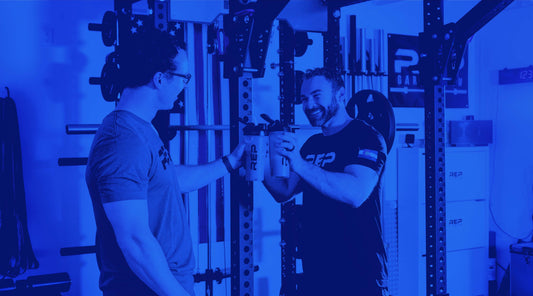
NEWSLETTER SIGNUP
Product launch information, promotions, blogs, and REP news.

